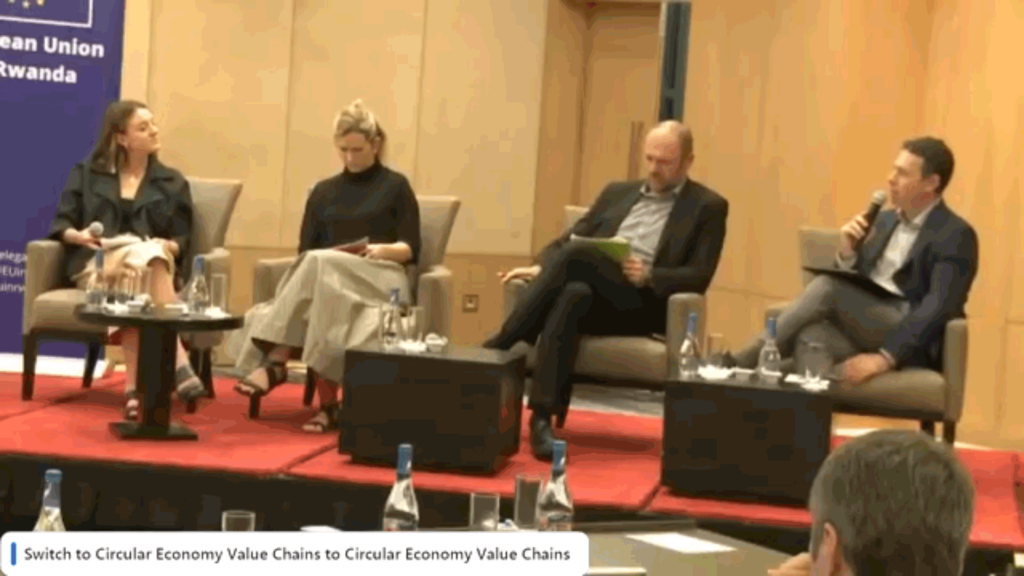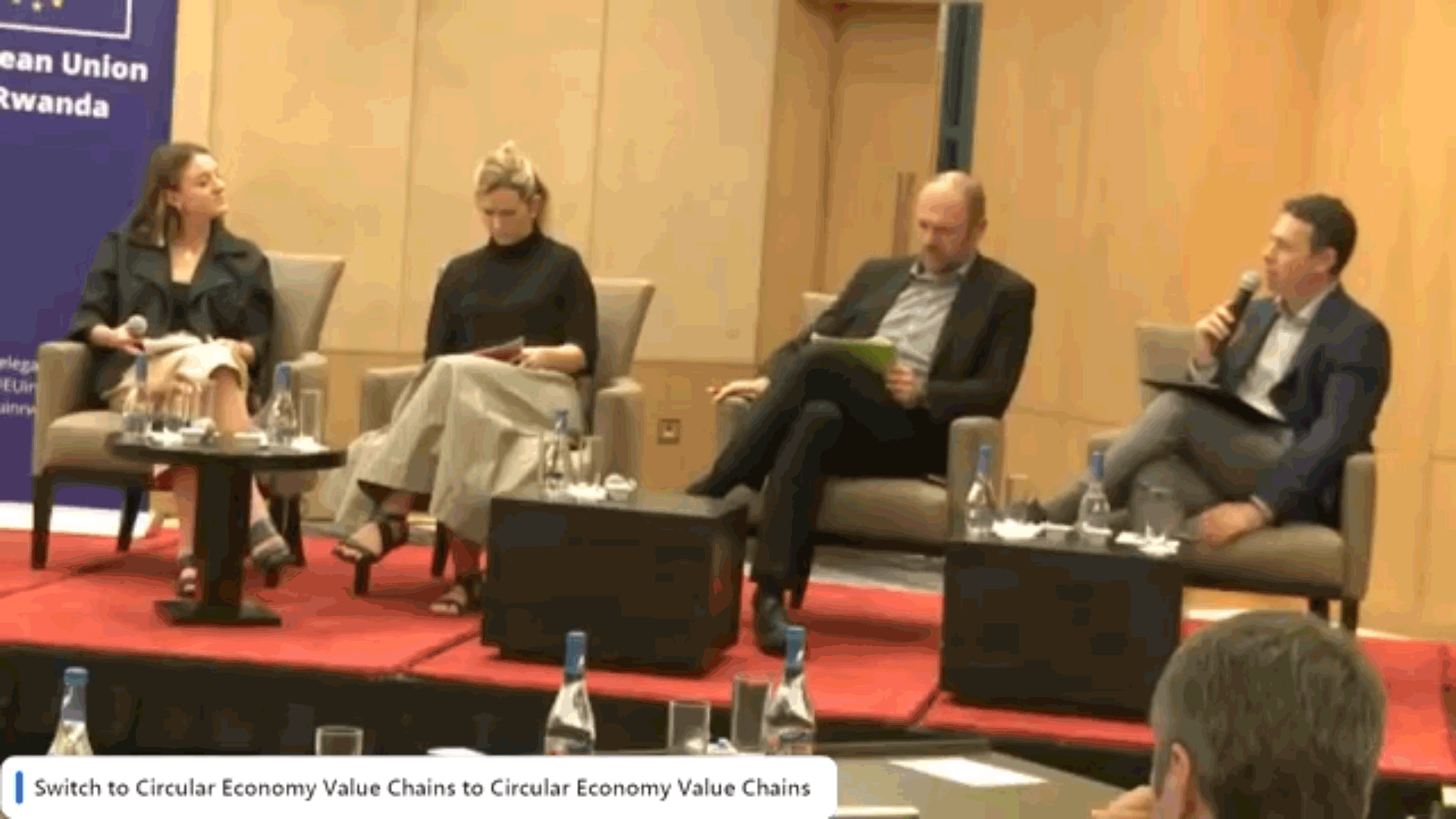Only 1% of material used to produce clothing is recycled into new clothing (globally). Reason enough for representatives from the European Commission, Circle Economy, research, and the textile industry to discuss the required technical, social, and business innovation, supported by policy, education and changes in production and consumption practices in the textile industry at the WCEF Acclerator Session on December 8, 2022.
A four-fold strategy to transform the textile and fashion industry
Mr Gaëtan DUCROUX, International relations officer in charge of bilateral and regional environmental cooperation with Africa and South Asia in the European Commission Directorate General for Environment, expressed the EU’s concern due to the alarming statistics on the fashion industry’s impact on the environment. He highlighted the importance of the sector for the European Union and beyond. In Europe alone, the sector employs for than 1.5 million people. To tackle the industry’s footprint, the EU has put a Sustainable Textile Strategy in place with four elements: First, the Strategy aims to make sustainable products the norm in the EU. In future, textiles shall be more durable, more re-usable, repairable and recyclability. An eco-design directive will enable this transition. Secondly, the EU wants to empower consumers to enable them to identify sustainable and circular products. As part of this package, the commission is also intending to establish a digital product passport. Such digital product passports could offer data on a product’s adherence to EU regulations, materials used, source of components, and options for repair and disassembly. Thirdly, the European Commission is currently evaluating using Extended Producer Responsibility (EPR) as a way to regulate sustainable textiles and the handling of textile waste in line with the EU waste hierarchy. The fourth Strategy, is to address the global textile value chains.
An innovative method to address value chains
The SWITCH to Circular Value Chains project is one of the EU-funded measures. Ms. Hatti COOPER, Director of Programmes at Circle Economy, explained that the five-year project is designed to accelerate the global transition towards circular value chains and focuses on three main value chains i.e. plastic packaging, textiles and IT/electronics. The project centres on an innovative method of working with multinationals and their suppliers in low-income countries to identify, test, and ultimately scale circular economy pilots. It focuses on creating industrial pilots and an enabling environment in countries such as Bangladesh. One pilot aims to promote the adoption of circular fibres such as cotton and polyester and building the capacity of local stakeholders to re-integrate fibres back into manufacturing processes. Another activity aims to encourage large-scale collaboration to improve recycling capabilities of suppliers. The project works with local business development providers to ensure scalability and bankability, ultimately leading to a global transition to a circular economy.

Drivers that help the textile and fashion industry adapt
Ms. Ferda ULUTAS ISEVI, Business Development Consultant, highlighted five strategies that can help the textile and fashion industry adapt enabling a transition to a circular economy. Strategy number one is to prevent pollution and save resources, primarily concerning the manufacturing stage. The second strategy is to recover resources after disposal. The third strategy is to extend resource use and reduce disposal during the use and maintenance phases. Strategy number four is to increase resource utilization rate, essentially by turning consumers of a product into users of a service. The final and fifth strategy is to shift to circular supplies and renewable resources. Using renewable energies and bio-based materials that can be locally and fully recycled closes loops at every life cycle stage. Ms. Ferda ULUTAS ISEVI further examined a number of drivers for the circular transition including increasing consumer demand for sustainable products, increasing interest in the retail and rental market, especially the potential in young people for adopting more sustainable ways to dress such as local cultural traits, the existence of different types of raw materials and existing infrastructure with significant potential for waste collection.
Rights and opportunities of workers need to be safe-guarded
Ms. Esther GOODWIN BROWN, Circle Economy, Circular Jobs Initiative Lead, added that job creation and a just transition needs to be part of the mainstream dialogue discussing the transformation to a circular economy. She acknowledges the opportunities that are there around job creation, access to training, entrepreneurship and critically improving the quality of jobs. However, she warned that these benefits are not necessarily given. In the textiles industry, particularly related to working conditions, policies needs to be designed in ways that proactively promote and safeguard the rights and opportunities of workers at all stages the value chain.
The circular journey started with a sewing machine in a shop
Ms. Eliina Brinkeberg, Environmental Manager at Nudie Jeans, shared the company’s journey towards becoming a circular company. Beginning in 2001, the founder’s vision was to create high-quality, organic cotton products with fair working conditions and transparent production. The company has a consolidated supply chain, with all subcontractors and their quality inspected and supervised. The circular journey began with a sewing machine in a shop to adapt the length of jeans for customers, which led to free repairs and the re-use of materials and fabrics for patches. Today, the company offers a 20% discount on new jeans when customers turn in old ones. Brinkeberg believes in creating timeless garments and emphasizes the importance of design decisions in achieving this goal. Nudie Jeans places importance on increasing the emotional value of their garments for users to expand garments’ lifecycles. In addition, the company has a climate action plan in place to reach targets and reduce emissions across their production. They also aim to decouple financial growth from the use of natural resources. “Production from and sale of second-hand garment will be one business of the future”, Brinkeberg closed.
This accelerator session was part of the World Circular Economy Forum 2022, which took place 6-8 December in Kigali, Rwanda. The session was co-hosted by UNIDO, UNEP, MedWaves, SWITCH to Green Facility, Chatham House, and Circle Economy.
WATCH THE WHOLE SESSION: HERE
,

